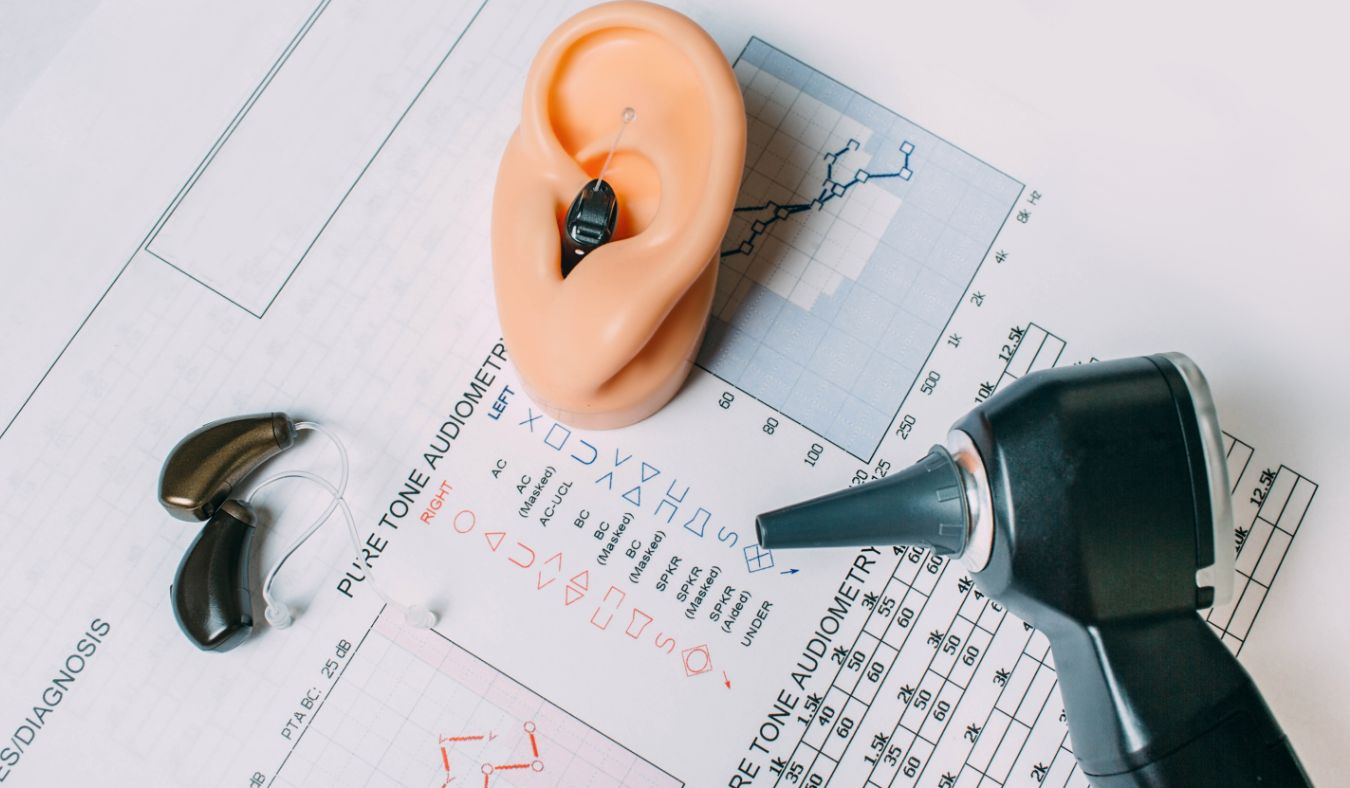Strategies for Effective Patient Education in Hearing Care
Understanding your hearing health can be challenging, especially if you

By: admin | August 21, 2025
Understanding your hearing health can be challenging, especially if you are new to the topic of hearing loss or exploring treatment options for the first time. You may find yourself looking over audiogram results, comparing various hearing aid features or trying to set realistic expectations for how well a solution will work for you. Without clear, straightforward information, it can be difficult to feel confident in your decisions or fully understand what your care involves.
Clear and personalized patient education can make this process easier. When an audiologist takes the time to explain information in a way that is easy to follow, addresses your individual concerns and ensures you feel prepared to take the next steps, it can make a significant difference. Open communication allows you to be more involved in your hearing care, ask questions comfortably and work with your audiologist to choose solutions that match your needs and lifestyle. The best results often come from an approach that is tailored to your learning style and priorities, ensuring your care feels both informed and collaborative.
Hearing loss does not always mean a total inability to hear. It can develop slowly over time or happen more suddenly, and its effects can vary from person to person. Some people may still pick up certain sounds clearly while others seem faint or unclear, particularly in places with background noise. Gradual hearing changes are often overlooked because they can be subtle at first, while sudden hearing loss can be more noticeable and may require prompt medical care. Thinking of hearing loss as a range of experiences, rather than one fixed condition, gives a more accurate picture of how it affects people.
In daily life, hearing loss can influence more than just how well you follow conversations. You might find yourself missing words during discussions, having difficulty hearing calls or raising the volume on devices more than you used to. Crowded or noisy settings can make listening even harder, which may lead to avoiding certain situations. It can also affect awareness of important sounds in the environment, like timers, sirens or footsteps approaching. Paying attention to these early signs and getting support from an audiologist can help you find ways to stay connected, aware and engaged in everyday activities.
Clear communication is an important part of effective hearing care because it ensures you fully understand your hearing health, your treatment options and how to use any devices you receive. Without clear explanations, it can be easy to leave an appointment unsure about next steps or uncertain about how to care for your hearing aids. Asking your audiologist to explain information in straightforward terms can make the process less confusing and help you feel more confident about your decisions. It is also helpful to speak up if something is unclear so it can be explained in a way that makes sense to you.
Having information you can review later can make a big difference in how well you follow your care plan. Written instructions, printed guides or even notes from the appointment can serve as useful reminders once you are at home. Bringing a trusted friend or family member can also help, as they may catch details you miss and provide extra support when you are learning something new. This kind of preparation helps make sure you leave each appointment with a clear understanding of your hearing care, which can lead to better results.
When explaining different types of hearing loss, audiologists often focus on making the information clear and relatable. Instead of relying only on medical terms, they may describe how each type affects daily listening. For example, sensorineural hearing loss might be explained as having difficulty picking up softer sounds or understanding speech in noisy places, while conductive hearing loss could be compared to a blockage that makes sound seem muffled. This approach allows patients to connect the condition to real-world situations, making it easier to understand what is happening and why certain treatments are recommended.
Audiologists may also use visuals, including diagrams of the ear or audiogram charts, to show where the problem occurs and how it impacts hearing. Breaking down the differences between types of hearing loss step-by-step helps patients absorb the information without feeling confused. Using everyday comparisons can make the explanation more practical. Clear and simple descriptions give patients a better understanding of their diagnosis, which can help them feel more confident when discussing treatment options and deciding on the next steps.
Before your first hearing appointment, your audiologist will gather information to understand your hearing history and overall ear health. This typically includes questions about any difficulties you have noticed, situations where listening feels challenging and past exposure to loud sounds. They may also ask about health conditions or medications that could affect your hearing. In addition, your audiologist will perform an ear exam to check for blockages, inflammation or other issues that could influence the results of your test. This step ensures the testing process focuses on your level of hearing.
During the hearing test, you will be in a quiet room so your audiologist can accurately assess your hearing. You will listen to a series of tones at different volumes and pitches and may be asked to repeat words or identify sounds through headphones. The test is non-invasive and helps measure both how softly you can hear and how well you understand speech in various conditions. This thorough approach gives a complete picture of your hearing and helps your audiologist identify any areas that may need attention.
After the test is finished, your audiologist will review the results with you and explain what they mean for your hearing health. They will discuss potential next steps, which could include treatment options, follow-up monitoring or adjustments to your daily listening routines. This is an opportunity to ask questions and make sure you understand your results and care plan. By the end of your appointment, you will have a clear understanding of your hearing and guidance for protecting or improving it going forward.
Communicating openly with your audiologist is an important part of making your hearing care effective and personalized. Before your appointment, it helps to ask what items or information you should bring, like a list of current medications, prior hearing test results or notes about changes you have noticed in your hearing. Knowing what to prepare can make the appointment more productive and ensure your audiologist has the information needed to evaluate your hearing accurately. It’s also useful to ask about the testing process, including how long it will take and what each part involves, so you know what to expect.
During the appointment, sharing your experiences and concerns allows your audiologist to provide care that fits your lifestyle. You can describe situations where hearing is challenging, mention any difficulties with current devices or discuss questions about treatment options. Being clear about your needs helps your audiologist offer solutions that are practical and realistic for your everyday life. Taking an active role in the conversation not only improves your understanding of your hearing health but also strengthens the partnership with your audiologist, leading to better guidance and more confident decision-making.
When discussing treatment plans with your audiologist, it is important to ask detailed questions about the different types of hearing aids available. Each style and model offers unique features, from basic amplification to advanced technology that can connect with smartphones or reduce background noise. Asking about how each option works and which might be best suited to your lifestyle can help you make a more informed decision. Your audiologist can explain the benefits and limitations of each type, making it easier to choose a device that matches your hearing needs and daily routines.
It’s also important to ask about personalization and programming for your hearing aids. Modern devices can be adjusted to fit your specific hearing profile, and many include customizable settings for different environments. Questions about how often adjustments can be made, whether programs can be tailored to certain situations and what support is available for ongoing tuning will give you a clear understanding of how your hearing aid will work for you. By discussing these details, you can ensure your treatment plan is designed around your hearing goals and that you feel confident using your devices in everyday life.
Learning the right way to use and care for hearing devices helps you get the best results and avoid common problems. Proper care also keeps your devices working well for a longer time. Some helpful tips include:
Family support can make a big difference when you are learning about hearing care and new devices. Having someone with you at appointments often helps you remember more information. A family member or close friend can help by taking notes, asking questions or reminding you of important instructions. Their encouragement can also make it easier to adjust to changes during the process.
Support at home often means extra help with daily tasks like cleaning hearing devices or following care instructions. When your family understands what you are learning, they can give reminders and help build good habits for better hearing health.
Planning for ongoing support is an important part of maintaining your hearing health. After your initial appointment, it helps to discuss with your audiologist how follow-up visits will work and what kind of check-ins are recommended. This includes understanding how often your hearing should be evaluated, when adjustments to devices might be needed and what resources are available if you encounter challenges at home. Knowing what to expect from ongoing support helps you feel more confident in managing your hearing care over time.
Future appointments also provide an opportunity to track changes and make improvements to your hearing solutions. You can ask about scheduling regular follow-ups, testing for shifts in your hearing or reviewing device performance to make sure everything is working as intended. Discussing these plans with your audiologist ensures that your care remains personalized and responsive to your needs. By staying engaged with regular visits and support, you can maintain better hearing and make the most of any devices or treatments you are using.
Effective patient education supports successful hearing care. When you understand your options and feel comfortable asking questions, it becomes easier to follow instructions, use your devices correctly and notice changes in your hearing health. Using clear communication strategies and visual tools during appointments can help you feel more confident about every step of the process.
If you have questions about your hearing or want support with learning how to care for your devices, at Doc Side Audiology our audiologists are available to help. You can contact us for more information or to schedule an appointment at any of our locations:

Understanding your hearing health can be challenging, especially if you
By: admin | August 21, 2025

Hearing loss is a common condition that affects millions of people
By: admin | March 19, 2025

Understanding Hearing Loss: What You Need to Know and How We Can Help
By: admin | October 9, 2024
